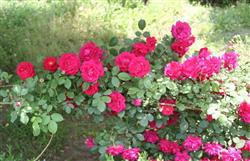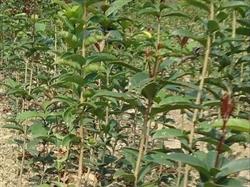Common insect pests of open rose

Rose is a flower with many insect pests. Before carrying out prevention and control, we should first understand the symptoms of insect pests and understand which kind of insect pests. Secondly, we should understand the occurrence time and regularity of this kind of insect pests, so as to prescribe the right medicine to the case. Here we introduce the four most common insect pests. Aphids gather on buds, tender leaves and flower buds of rose to suck juice. When it occurs in large quantities, there are nectar-like black secretions. It is parthenogenetic in spring and summer and overwintered by bisexual reproduction in autumn. When cultivated in open field, early spring and early summer are the most frequent periods. Control methods: when the number of insects is not much, you can spray water to rinse. Spray 4000 to 5000 times 2.5% deltamethrin emulsion or 1500 to 2000 times 40% omethoate if necessary. 1/1000 neutral washing powder should be added when spraying to improve the control effect. Pay attention to protect ladybugs, grass bells, aphid flies and other natural enemies. Helicoverpa armigera (Helicoverpa armigera) is a kind of pest with miscellaneous food habits and great harm. It occurs 3 to 4 generations a year in North China. The first generation larvae endanger from late June to early July, the second generation larvae harm from late July to early August, and the third generation larvae endanger in early September. When the temperature of the next year is above 15 ℃, the larvae are emergence, and the larvae have 6 instar. The larvae mainly drill into the tender buds and flowers, and the feces are excreted from the buds. A larva can harm several buds, so that the flowers can not open normally, most of them become yellowish green, fall off after 3 to 4 days, and the mature larvae spin and droop and pupate. In many years of Rain Water, because the environmental conditions are not suitable for the life of cotton bollworm, cotton bollworm generally does not occur greatly. Prevention and control methods: when there is a small amount of harm, the larvae can be captured manually, and the drug control is best carried out before the second instar larvae enter the bud. The newly hatched larvae can be poisoned by spraying bacterial insecticide B.T emulsion or chemical pesticide 1200 to 2000 times, 2000 times 20% chrysanthemum EC, 1200 times 50% phoxim EC, 5000 times 2.5% Kungfu EC and so on. The beetle has a generation every year, and adults appear from May to June. The main harm to rose flowers, laying eggs in the soil, its larvae eat the roots of all kinds of flowers, go out at dusk, artificial accumulation of rotten leaves or chicken manure is the place where it likes to lay eggs, the most serious harm from July to August, the flowers can be bitten incomplete, or even eaten up, can catch 2 to 3 beetles in a flower, the best control method is artificial capture. The stem wasp of Chinese rose spends the winter with larvae in the damaged branches, and the adults Eclosion out in the first and middle of May of the following year. They like to lay eggs on the tender shoots of the same year, especially on the sturdy shoots emitted from the ground, and the damaged branches wilt at first and then wither and bend downwards. In autumn, some drill into the underground part of the branches, and some drill into the thicker branches of the previous year to spend the winter. Control method: wilting tender shoots are found in spring, cut off at any time, and destroy the larvae inside. When it is found that the branches with insects must be completely eliminated when cutting in winter, the branches with insects must be cut off and the larvae inside must be destroyed. Pay attention to protecting parasitic wasps and other natural enemies.
- Prev

Cultivation points of potted rose pomegranate
1.1 cutting period. Located in the Yangtze River basin, rose seedlings are mostly raised in spring and autumn, and spring begins in late April and ends at the end of May. Autumn begins in late August and ends at the end of October. Autumn cutting seedlings can not be divided into pots in the same year, young roots are underdeveloped, cold resistance is poor, it is necessary to do a good job of anti-freezing in winter. 1.2 potted soil.
- Next

The best time for cutting sweet-scented osmanthus
The choice of cutting time and the control of temperature. Sweet-scented osmanthus cuttings are the best in May and June. The suitable rooting temperature of sweet-scented osmanthus is from 25 ℃ to 28 ℃. If the temperature is too low, it should be covered with plastic film to increase the light and raise the temperature of seedling bed. If the temperature is too high, you should pay attention to shading and lift a corner of the plastic film for ventilation or spray. ...
Related
- Fuxing push coffee new agricultural production and marketing class: lack of small-scale processing plants
- Jujube rice field leisure farm deep ploughing Yilan for five years to create a space for organic food and play
- Nongyu Farm-A trial of organic papaya for brave women with advanced technology
- Four points for attention in the prevention and control of diseases and insect pests of edible fungi
- How to add nutrient solution to Edible Fungi
- Is there any good way to control edible fungus mites?
- Open Inoculation Technology of Edible Fungi
- Is there any clever way to use fertilizer for edible fungus in winter?
- What agents are used to kill the pathogens of edible fungi in the mushroom shed?
- Rapid drying of Edible Fungi

